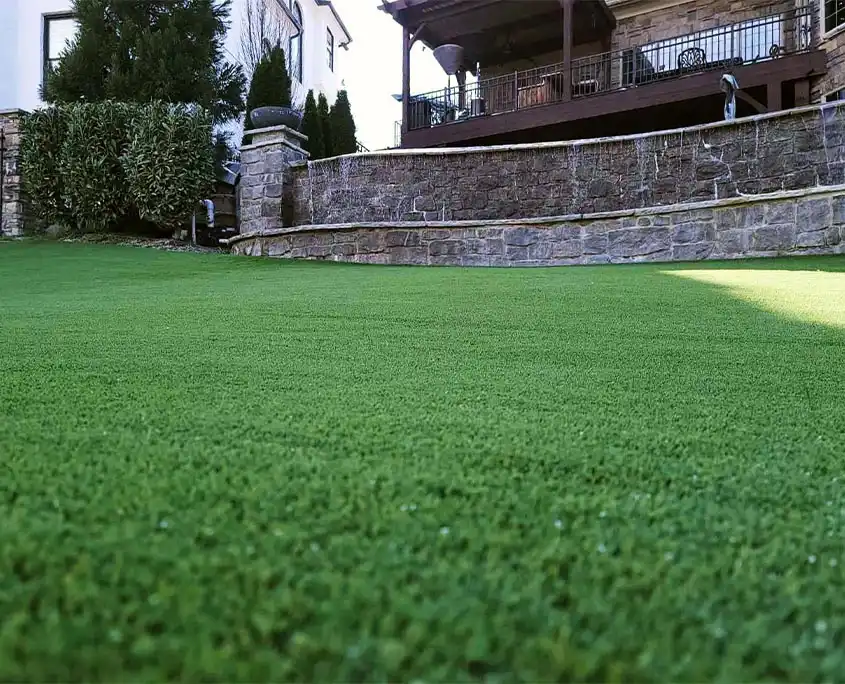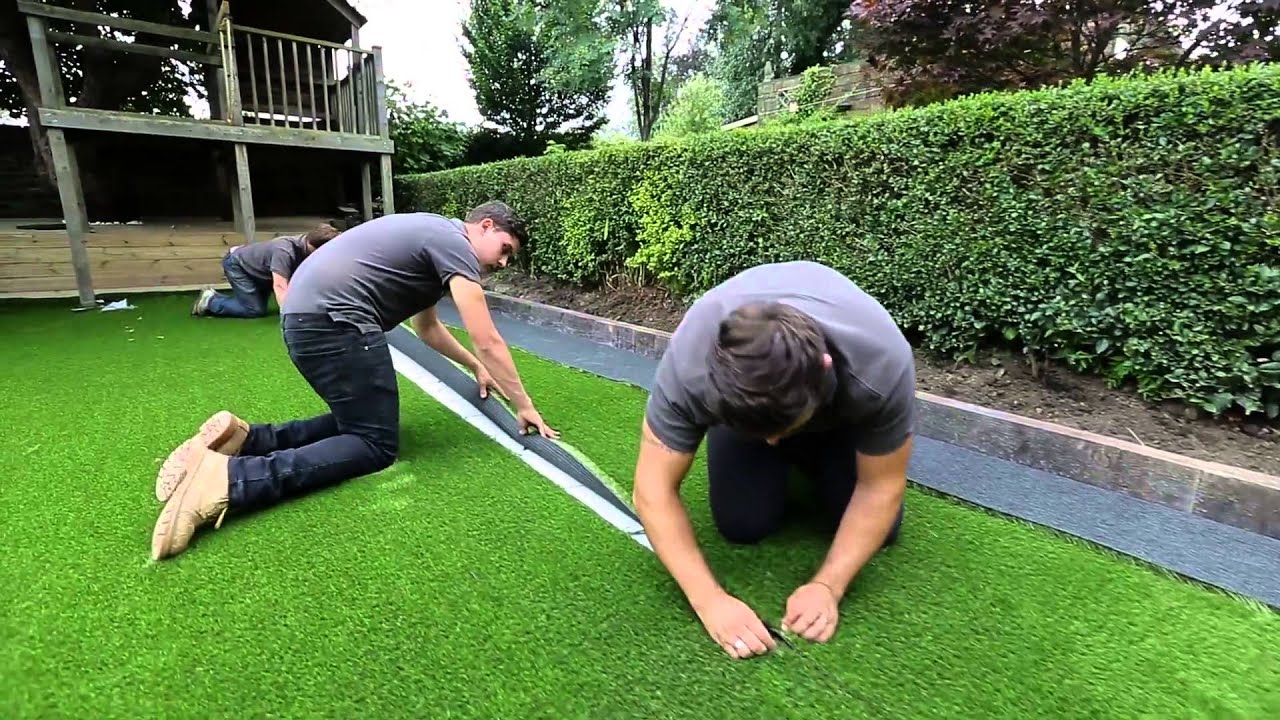Enjoy a Flawless Lawn with Arizona Artificial Turf for Any Outdoor Space
Enjoy a Flawless Lawn with Arizona Artificial Turf for Any Outdoor Space
Blog Article
Look Into the Environmental Perks of Opting for Artificial Lawn Solutions
The adoption of synthetic grass solutions offers a compelling possibility to address pushing environmental obstacles. By considerably minimizing water use and reducing the application of dangerous chemicals, these options not only promote lasting landscape design yet likewise safeguard regional communities.
Water Preservation Advantages
Among the most significant benefits of synthetic grass is its capability to preserve water. Conventional lawn lawns call for significant irrigation, particularly in locations susceptible to drought or water limitations. In comparison, synthetic grass does not need watering, substantially decreasing the general need for water resources. This attribute is especially helpful in dry regions where water deficiency is a pressing concern.
By removing the need for regular watering, synthetic grass adds to lasting landscape practices and assists mitigate the environmental effect of too much water consumption. Moreover, the preservation of water expands to the decrease of runoff, which can bring about dirt erosion and waterway air pollution.
In addition, the installation of synthetic grass enables municipalities and homeowners to allocate water sources extra effectively, concentrating on essential usages such as drinking water and agriculture. The change in the direction of synthetic grass not just advertises accountable water use however likewise aligns with broader ecological goals targeted at protecting natural deposits.
As areas increasingly prioritize sustainability, the water preservation advantages of synthetic grass present an engaging situation for its adoption in domestic and business landscaping projects.
Decreased Chemical Usage
The change to man-made lawn significantly lowers the dependence on chemical therapies commonly utilized in all-natural grass upkeep. Standard grass administration normally involves the application of herbicides, plant foods, and pesticides to promote growth and control bugs. These chemicals can present dangers to human health, neighborhood wild animals, and the atmosphere, adding to dirt and water contamination.
In comparison, man-made lawn removes the requirement for these unsafe materials. By reducing the launch of artificial substances right into the ecological community, fabricated turf promotes healthier soil and water systems.
In addition, the absence of chemical runoff connected with synthetic grass installments helps protect neighborhood waterways from air pollution, supporting aquatic life and keeping biodiversity. Arizona turf. As areas increasingly prioritize lasting techniques, deciding for man-made grass presents a feasible option that straightens with environmental conservation goals. Via this shift, home proprietors can enjoy lush green areas without jeopardizing eco-friendly wellness, paving the means for a more sustainable future
Lower Carbon Footprint

In addition, the setup of artificial grass can lead to considerable water preservation. Natural lawns need significant amounts of water for watering, which not only adds to the carbon impact linked with water removal and therapy but also strains local water resources. On the other hand, synthetic grass requires very little maintenance, calling for no watering, thus dramatically lowering water use and its linked power expenses.
Furthermore, the durability of synthetic grass contributes to its reduced carbon effect. With a life expectancy of as much as 15 years or more, the need for frequent replacements is diminished, resulting in much less waste and lower power intake in production and throwing away typical lawn alternatives. In general, synthetic turf presents a lasting choice for ecologically conscious landscape design.
Environment Preservation
Habitat preservation is a vital consideration in the debate over landscape design options, especially when contrasting artificial lawn to natural turf. Natural turf lawns often check this site out need comprehensive maintenance, including making use of pesticides, plant foods, and herbicides, which can negatively affect local communities. These chemicals can seep into the soil and rivers, damaging native plants and fauna and interrupting local environments.
In contrast, synthetic grass provides an opportunity to lower the ecological impact of landscaping. By selecting artificial turf, home owners can reduce the disturbance of natural environments associated with standard grass care methods. Synthetic grass removes the need for dangerous chemicals, thereby protecting close-by wild animals and maintaining the integrity of surrounding ecosystems. The installment of artificial turf can lead to the conversion of former turf areas into more biodiverse landscapes, such as pollinator gardens or native plant areas, which can support local wildlife.
Eventually, the change to fabricated lawn not just saves water and lowers maintenance initiatives but likewise fosters a much more harmonious relationship in between human activities and the natural surroundings, advertising environment conservation in the procedure.
Long-Term Sustainability
Long-lasting sustainability is an important element in assessing the advantages of fabricated lawn over typical lawn lawns. Among one of the most considerable benefits of synthetic grass is its longevity; it can last as much as 15-20 years with minimal maintenance, whereas all-natural turf requires regular reseeding and replacement. This long life minimizes the need for consistent resources, such as water, fertilizers, and pesticides, which are necessary for preserving a healthy yard lawn.
Additionally, artificial grass adds to a decrease in carbon exhausts connected with grass care tools. Conventional grass usually need gas-powered lawn mowers, trimmers, and blowers, every one of which add to air contamination. Turf installation phoenix az. In comparison, synthetic grass removes the need for such tools, promoting a cleaner setting
Furthermore, the manufacturing of synthetic lawn increasingly uses recycled products, boosting its sustainability account. As manufacturers adopt eco-friendly practices, the environmental impact of synthetic grass proceeds to diminish.

Conclusion
The fostering of synthetic grass remedies provides significant ecological advantages, consisting of substantial water preservation, minimized reliance on unsafe chemicals, and a reduced carbon footprint. Fabricated turf help in protecting natural environments by reducing why not check here land disruption and advertising long-term sustainability via the use of resilient products. Jointly, these elements read the article underscore the capacity of synthetic grass to contribute favorably to environmental wellness and offer a sensible alternative to standard landscape design methods in an increasingly resource-conscious globe.
In comparison, artificial grass does not require watering, considerably lowering the overall demand for water resources. By lessening the launch of synthetic compounds right into the ecological community, artificial turf promotes healthier soil and water systems.
In addition, the installment of synthetic grass can result in substantial water preservation. In comparison, fabricated turf needs marginal upkeep, requiring no watering, consequently dramatically lowering water use and its associated energy expenses.

Report this page